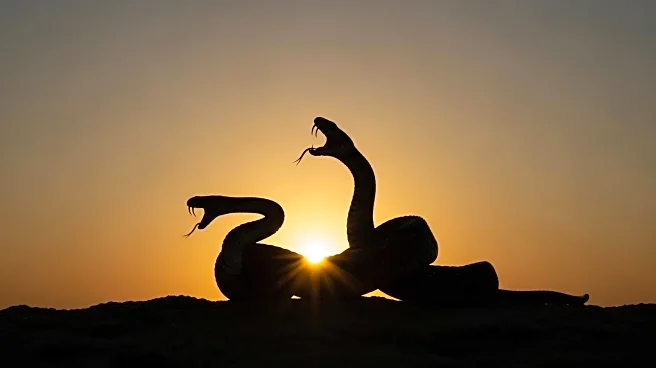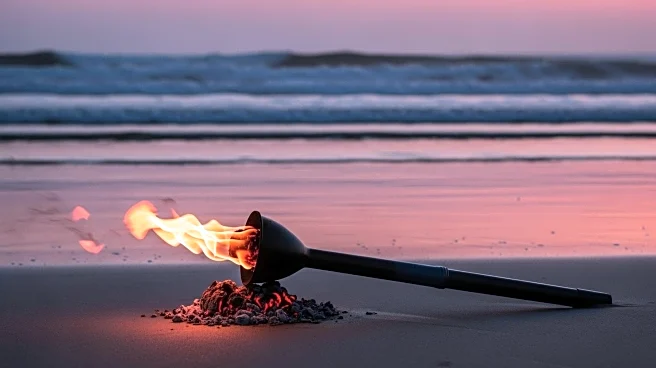What's Happening?
During a recent episode of 'Survivor 49', contestant Jake Latimer was bitten by a venomous sea krait snake, leading to his medical evacuation from the game. Host Jeff Probst detailed the incident, explaining that the bite was initially thought to be life-threatening due to the snake's venomous nature. However, it was later diagnosed as a 'dry bite', meaning no venom was released. Despite this, Latimer was unable to return to the game due to the physical and psychological toll of the incident. The evacuation was unprecedented in terms of medical attention, and Latimer was transported to a hospital in Australia for further observation.
Why It's Important?
The incident highlights the unpredictable nature of reality TV shows like 'Survivor', where contestants face real-world dangers. It underscores the importance of having robust medical support and safety protocols in place for participants. The evacuation also raises questions about fairness in the game, as Latimer's removal could impact the dynamics and outcomes of the competition. This event may lead to increased scrutiny and potential changes in how such shows manage contestant safety and game integrity.
What's Next?
Following the incident, 'Survivor' producers may review and potentially enhance safety measures for contestants, especially in environments with known wildlife risks. The show's portrayal of the incident could influence future episodes, focusing on the balance between entertainment and participant safety. Additionally, Latimer's experience might prompt discussions on the psychological impact of participating in high-stress reality TV environments.
Beyond the Headlines
The incident sheds light on the ethical considerations of reality TV production, particularly regarding participant welfare. It may lead to broader discussions about the responsibilities of producers in ensuring contestant safety and the potential psychological effects of such experiences. The event also highlights the cultural fascination with survival-based reality shows and the inherent risks involved.











